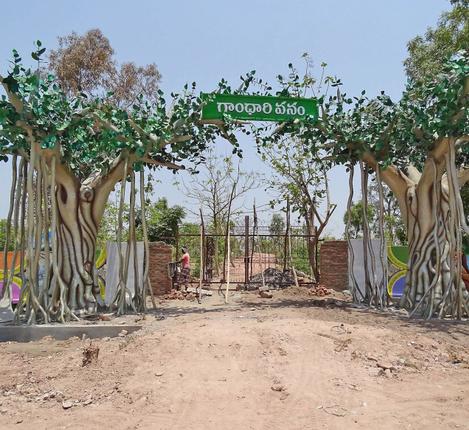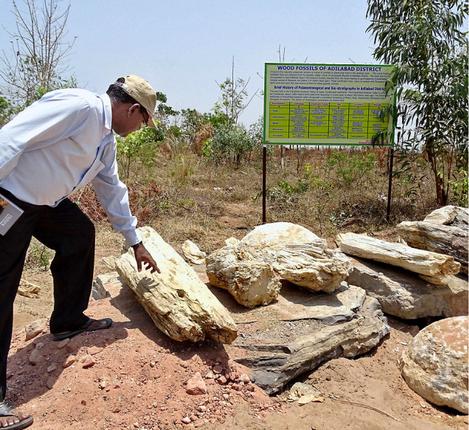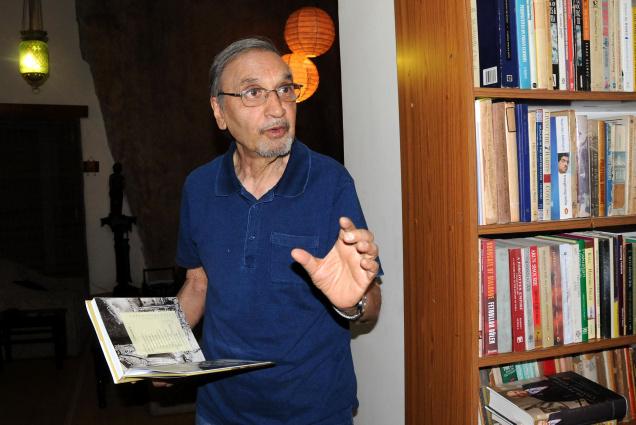
Gandhari Vanam in Mancherial town will soon have a museum showcasing millions of years of biodiversity of Adilabad.
Gandhari Vanam, a nature park near Mancherial town in Adilabad, is where you can go millions of years back in time. The 174-million-year-old tree fossils to be exhibited in a section of the soon to come up facility will help you visualise what the district must have looked like back then.

“That was the time when the giant dinosaurs roamed here, thriving on these coniferous trees. The Pranahita-Godavari valley of upper Gondwana is unique as it has preserved many of nature’s components from the era in its 3,000-metre thick sediments deposited over a period of 200 million years,” said Mancherial Divisional Forest Officer B. Prabhakar, pointing out the uniqueness of the nature park being developed by the Telangana Forest Department at a cost of Rs. 3.6 crore.
The park, located on the Mancherial-Mandamarri main road on the fringes of the coal town, is named Gandhari Vanam as the Gandhari fort is located close to it. It is a 350-acre facility divided into three parts.
“A 20-acre plot on the left side of the road (coming from Mancherial) has been developed as a picnic spot with ornamental plants, apart from a host of things. At least 500 visitors come here on weekends,” the DFO said.
The second 50-acre enclosure will become a good forest, and the department has plans to make it a deer park and an aviary in the near future. The third section, and the most important one, is the 280-acre facility on the other side of the road. It is like a repository and museum of the huge local biodiversity in terms of vegetation.
“Adilabad forests at one time had boasted of at least 500 types of trees, and we are planting many of these, which, for the sake of awareness and convenience, have been segregated into a few sections. For instance, we will have a medicinal plant section with 250 species, and others which will have trees linked with horoscope and nine planets,” Mr. Prabhakar disclosed.
For nature enthusiasts, Gandhari Vanam also has a walking track, while a boating facility and a couple of check dams are coming up. The authorities have also put up boards with information regarding the given sections, trees and fossils for the benefit of people. “We have designed the park to be educative too. People should know about nature, what it was and what it should be,” the DFO said.
The 280-acre facility is like a repository and museum of the biodiversity in terms of vegetation
source: http://www.thehindu.com / The Hindu / Home> National> Telangana / by S. Harpal Singh / Mancherial (Adilabad District) / April 25th, 2016
